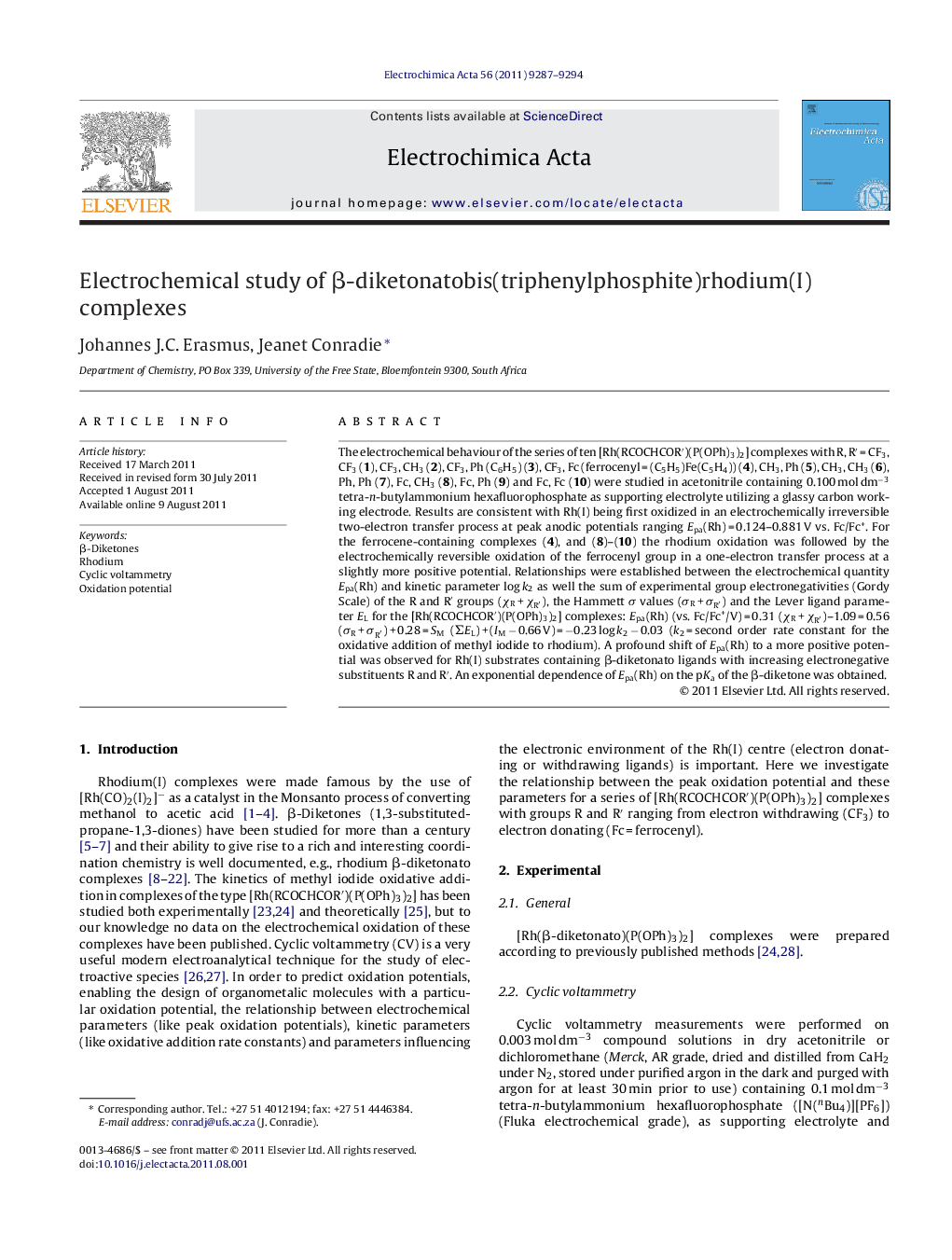| Article ID | Journal | Published Year | Pages | File Type |
|---|---|---|---|---|
| 189429 | Electrochimica Acta | 2011 | 8 Pages |
The electrochemical behaviour of the series of ten [Rh(RCOCHCOR′)(P(OPh)3)2] complexes with R, R′ = CF3, CF3 (1), CF3, CH3 (2), CF3, Ph (C6H5) (3), CF3, Fc (ferrocenyl = (C5H5)Fe(C5H4)) (4), CH3, Ph (5), CH3, CH3 (6), Ph, Ph (7), Fc, CH3 (8), Fc, Ph (9) and Fc, Fc (10) were studied in acetonitrile containing 0.100 mol dm−3 tetra-n-butylammonium hexafluorophosphate as supporting electrolyte utilizing a glassy carbon working electrode. Results are consistent with Rh(I) being first oxidized in an electrochemically irreversible two-electron transfer process at peak anodic potentials ranging Epa(Rh) = 0.124–0.881 V vs. Fc/Fc+. For the ferrocene-containing complexes (4), and (8)–(10) the rhodium oxidation was followed by the electrochemically reversible oxidation of the ferrocenyl group in a one-electron transfer process at a slightly more positive potential. Relationships were established between the electrochemical quantity Epa(Rh) and kinetic parameter log k2 as well the sum of experimental group electronegativities (Gordy Scale) of the R and R′ groups (χR + χR′), the Hammett σ values (σR + σR′) and the Lever ligand parameter EL for the [Rh(RCOCHCOR′)(P(OPh)3)2] complexes: Epa(Rh) (vs. Fc/Fc+/V) = 0.31 (χR + χR′)–1.09 = 0.56 (σR + σR′) + 0.28 = SM (ΣEL) + (IM − 0.66 V) = −0.23 log k2 − 0.03 (k2 = second order rate constant for the oxidative addition of methyl iodide to rhodium). A profound shift of Epa(Rh) to a more positive potential was observed for Rh(I) substrates containing β-diketonato ligands with increasing electronegative substituents R and R′. An exponential dependence of Epa(Rh) on the pKa of the β-diketone was obtained.
► Rh(I) is electrochemically irreversible oxidized to Rh(III) in [Rh(RCOCHCOR′)(P(OPh)3)2]. ► Oxidation potentials Epa(Rh) and kinetic oxidative addition rate constants relate linearly. ► Hammett σ values, group electronegativities and the Lever ligand parameter relate to Epa(Rh).
